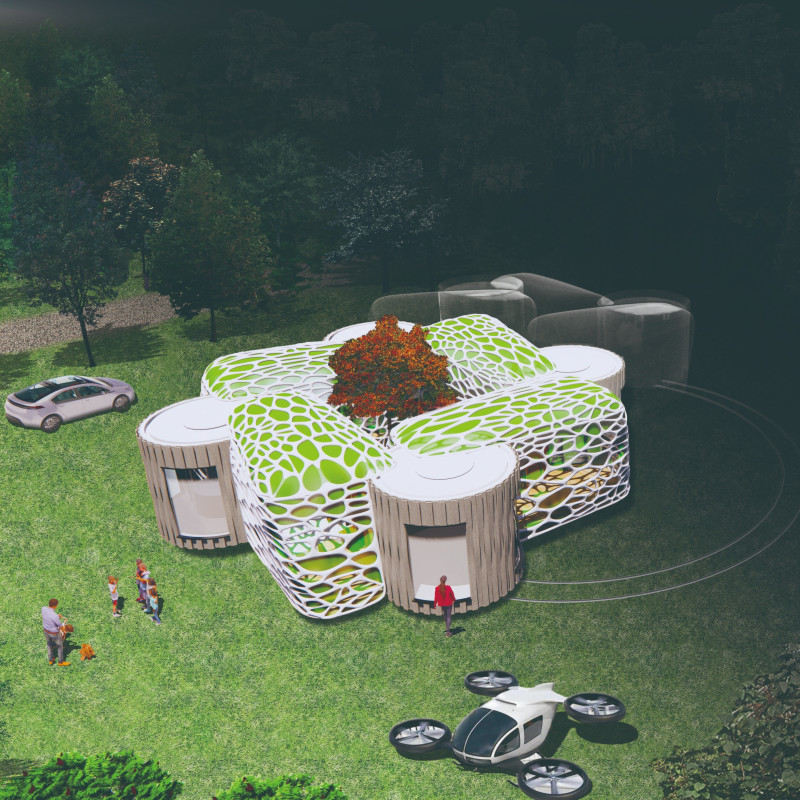5 key facts about this project
The architectural design focuses on adaptability and modularity in urban residential settings. Located within a contemporary cityscape, it aims to redefine traditional living spaces by borrowing concepts from biological systems. The overall design concept emphasizes user interaction and responsiveness to environmental changes, creating a framework for dynamic spatial organization that can change based on evolving needs.
Principles of Evolved Modular Architecture
Five guiding principles shape the approach taken in the design: cells, metabolism, reaction to stimuli, life cycle, and expansion and rearrangement. These principles influence both the structure and function of the spaces. The idea of cells highlights the independence of modular units, while still promoting connections between them for a cohesive living environment. Metabolism serves as a metaphor for self-sustainability, with each dwelling designed to function with minimal reliance on standard infrastructure.
Kinetic Forms and User Adaptability
The inclusion of kinetic forms showcases the project’s ability to respond to environmental aspects and individual preferences. This adaptability is crucial in designing spaces that can shift and evolve over time. The concept of a life cycle supports the idea of assembly, disassembly, and reassembly, suggesting an alternative to conventional building practices that often lead to waste. Expansion and rearrangement allow units to adapt to personal requirements, promoting flexibility in living arrangements.
Spatial Configuration and Functionality
The layout of the modular units consists of four main areas: a living space with a vestibule, a dining area with a kitchen, and two bedrooms that each contain a bathroom. This arrangement optimizes utility while fostering opportunities for both social interaction and privacy. A rail system enables the vestibule and W.C. to be movable, giving users the ability to change the arrangement of their spaces as their needs evolve.
Material Selection and Aesthetic Considerations
Material choices support the goals of modularity and sustainability. A steel frame serves as the core structural element, while polycarbonate panels are used for partitions. These materials not only provide durability but also allow natural light to pass through, creating visual connections between spaces while ensuring privacy where needed. The selection enhances the living environment, making it both functional and inviting.
A noteworthy design detail is the thoughtful consideration of daily rhythms. Spaces are designed to transform from bright and open during the day to cozy and closed at night. This shift caters to the varying needs of residents and contributes to an engaging living experience that adapts to different moments throughout the day.






















































